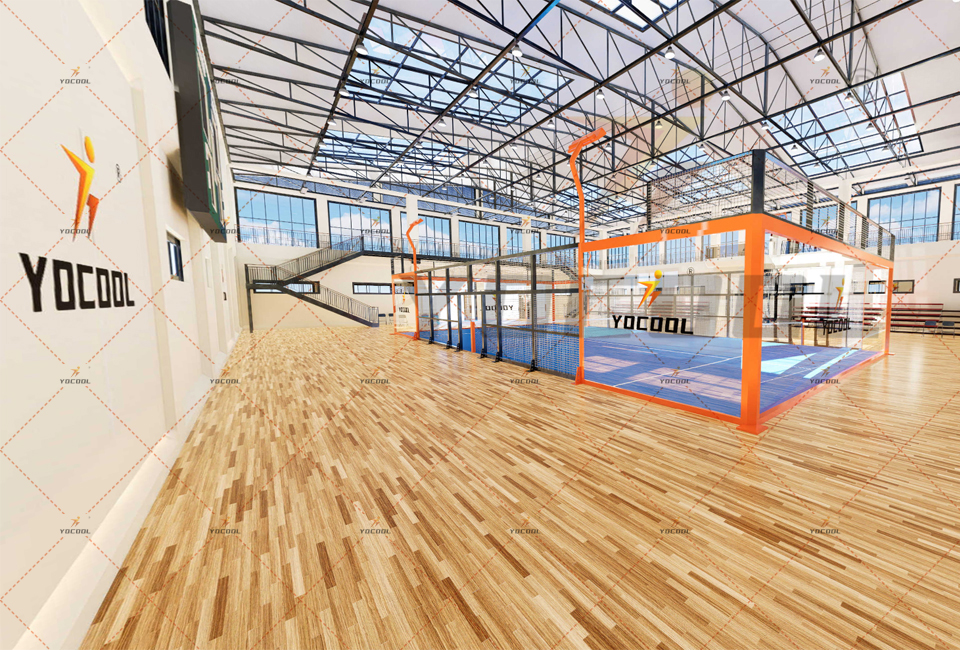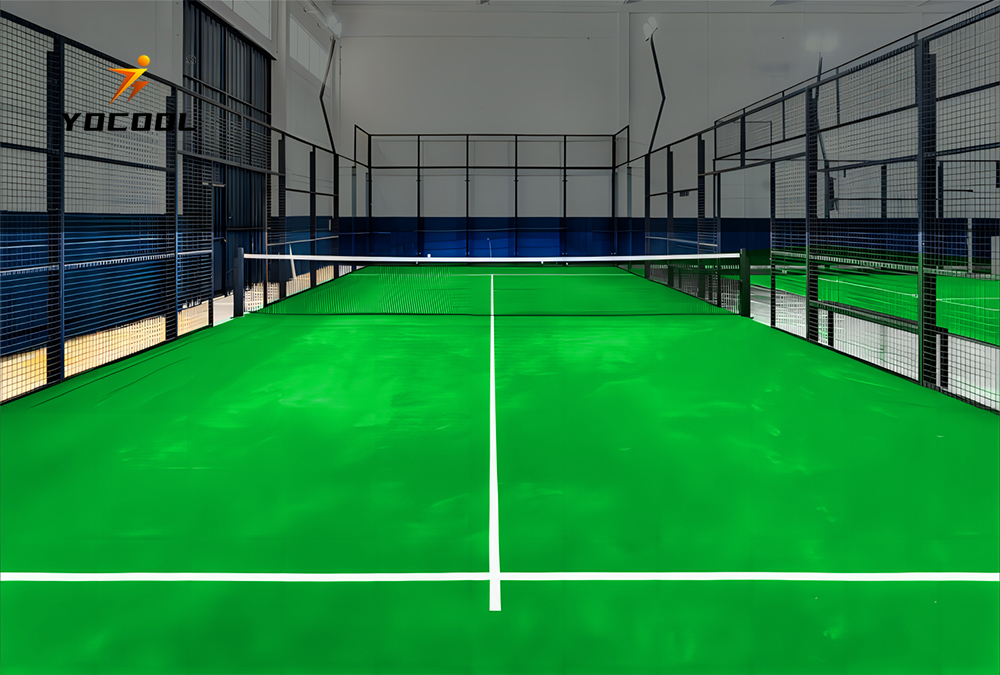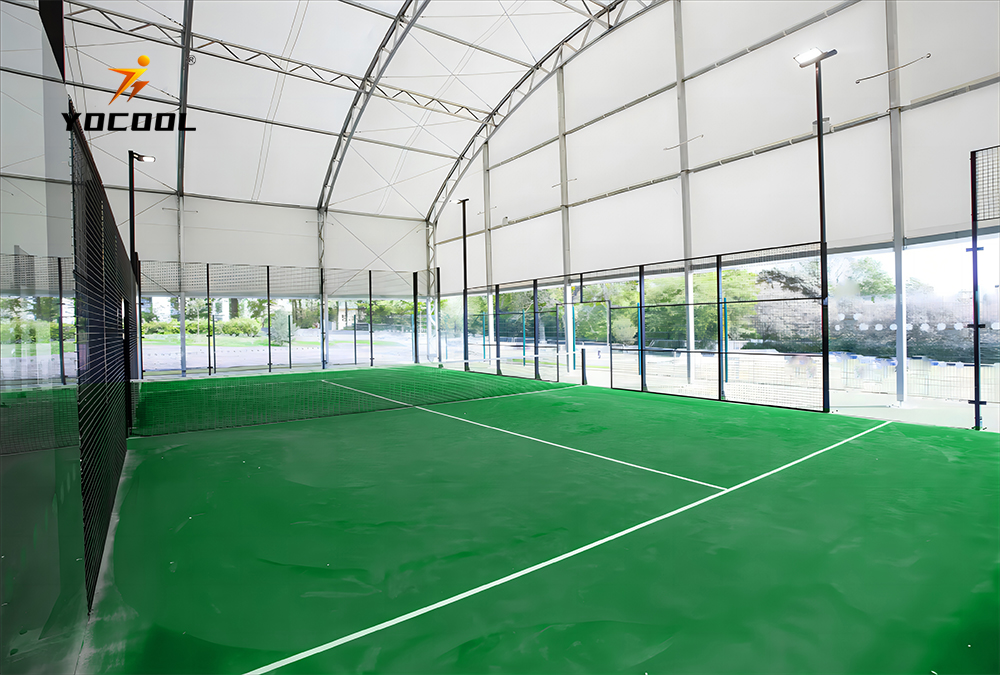

The burgeoning global phenomenon of padel tennis has ignited an unprecedented demand for high-performance equipment, particularly sophisticated paddle tennis rackets designed to elevate player experience and competitive edge. As the sport transitions from niche recreation to professional circuit, the focus intensifies on rackets that deliver an optimal synergy of power, control, and durability. This technical exposition delves into the intricate world of modern padel rackets, exploring the advanced materials, precise manufacturing processes, and cutting-edge design philosophies that define top-tier products like the NO.2 Panoramic Padel Orange. Our objective is to provide B2B decision-makers and technical personnel with a comprehensive understanding of the engineering excellence behind these crucial sporting instruments, enabling informed procurement and strategic investment decisions. We will dissect the technical parameters that govern racket performance, illustrate their application across diverse playing scenarios, and highlight the rigorous quality standards that ensure a product's longevity and consistency, crucial for both individual players and commercial operators managing sophisticated paddle tennis court facilities. This analysis aims to underscore the critical role of material science and precision engineering in shaping the future of padel equipment, moving beyond superficial aesthetics to reveal the profound technical advantages inherent in meticulously crafted paddle racquet designs that elevate the performance of paddle tennis rackets for competitive play.
The manufacturing of high-performance paddle tennis rackets is a testament to advanced material science and precision engineering, far removed from conventional industrial processes such as casting or forging, which are typically associated with heavy machinery components. Instead, the process commences with the selection of premium composite materials, primarily high-modulus carbon fiber and sophisticated fiberglass, often in multi-layered configurations to achieve specific flexural and torsional rigidity. The core of the racket, crucial for power and vibration dampening, is typically made from high-density EVA foam (Ethylene-vinyl acetate) or low-density polyethylene foam, each offering distinct play characteristics. The meticulous manufacturing journey involves several critical stages: initial cutting of composite sheets, precise layering in molds according to proprietary designs, and infusion with specialized epoxy resins under controlled pressure and temperature to create a monolithic, highly resilient structure. This is followed by a sophisticated compression molding process that consolidates the layers and cures the resin, ensuring exceptional structural integrity and uniform density throughout the racket face. Subsequent steps include precision CNC drilling of the iconic holes on the racket face, which are strategically placed to reduce air resistance and expand the sweet spot, alongside surface finishing, painting, and the integration of ergonomic grips. Adherence to stringent internal quality control protocols, mirroring principles of ISO 9001 quality management systems, is paramount at every stage. Furthermore, dimensions and weights are often benchmarked against International Padel Federation (FIP) guidelines to ensure fair play and equipment consistency. The designed service life of a premium paddle tennis racket is significantly enhanced by these robust materials and meticulous manufacturing, allowing for sustained high-intensity use by professional athletes and recreational players alike in various settings, from local paddle court leagues to professional tournaments. These technical advantages, focusing on optimized energy transfer and vibration absorption, directly translate into superior performance and reduced player fatigue, solidifying the reliability of these paddle tennis rackets.

Understanding the technical parameters of paddle tennis rackets is crucial for both players seeking an edge and facilities aiming to provide optimal equipment. Key specifications dictate a racket's playability, influencing factors like power, control, and comfort. Weight, typically ranging from 350g to 380g, directly impacts maneuverability and swing speed; lighter rackets offer quicker reactions, while heavier ones provide more power. Balance, measured from the handle's base, shifts the weight distribution, with head-heavy designs favoring power and head-light designs enhancing control. Racket shape—round, tear-drop, or diamond—is another pivotal factor, correlating with the sweet spot's size and location. Round shapes offer the largest sweet spot and better control, ideal for defensive players; diamond shapes, with a higher balance point, suit aggressive players seeking maximum power; tear-drop shapes offer a versatile blend. The core material's density (EVA Soft, EVA Medium, EVA Hard) significantly influences ball output, vibration dampening, and feel. A softer core provides more ball output and comfort, while a harder core offers greater control and direct feel. Face materials, such as 3K, 12K, or 18K carbon fiber, or fiberglass, determine the racket's stiffness and durability; higher 'K' counts indicate more carbon filaments per weave, resulting in a stiffer, more powerful face. The thickness, usually around 38mm, provides rigidity. These parameters collectively define the racket's performance profile, directly impacting a player's ability to execute shots with precision and power. For instance, a paddle racquet with a higher balance and a stiff 12K carbon face will yield immense power but demand more precise technique, while a round shape with a soft EVA core will offer superior control and comfort, reducing arm fatigue during extended play on a padel tennis court. The varied specifications make each paddle tennis racket unique in its feel and response.

The strategic deployment of high-performance paddle tennis rackets extends across various demanding scenarios within the rapidly expanding padel ecosystem. From competitive professional tournaments held on specialized panoramic padel court setups, offering superior spectator visibility, to high-intensity training sessions at elite sports academies, and even recreational play in burgeoning community paddle court facilities, the choice of racket profoundly impacts performance and player satisfaction. Our advanced rackets are engineered to excel in these diverse environments. For professional players, the precise balance and responsive carbon fiber face facilitate powerful smashes and intricate volleys, while the optimized sweet spot minimizes mis-hits during high-pressure points. In coaching academies, the consistent feel and durability ensure that rackets can withstand extensive use by multiple players, making them a sound long-term investment. Compared to generic or entry-level rackets, which often feature simpler fiberglass constructions and less sophisticated core materials, our professional-grade paddle racquet designs offer tangible advantages: superior energy transfer for more powerful shots, enhanced vibration dampening for reduced arm fatigue and injury prevention, and greater precision due to tighter manufacturing tolerances. These benefits are not merely theoretical; feedback from competitive players highlights improved shot accuracy and sustained comfort during prolonged matches. For commercial entities such as padel clubs, investing in quality equipment translates into a better player experience, fostering loyalty and driving higher court utilization rates, directly impacting profitability. The ability of these paddle tennis rackets to consistently perform under varied climatic conditions and intense competitive pressure reinforces their status as a preferred choice for serious players and forward-thinking facility operators.

In the rapidly evolving landscape of padel, manufacturers of high-end paddle tennis rackets are continually pushing the boundaries of innovation to meet the demands of a discerning market. The industry trend is moving towards integrating advanced aerospace and automotive composite technologies into sports equipment, focusing on lighter, stronger, and more responsive materials. This involves significant investment in Research & Development, particularly in refining carbon fiber weaves, experimenting with multi-density EVA cores, and developing proprietary surface textures for enhanced spin. While direct comparison with specific competitors is beyond the scope of this general overview, leading manufacturers differentiate themselves through superior material sourcing, stricter quality control, and innovative design patents that address specific player needs, whether it's maximizing power, enhancing control, or minimizing vibration. Furthermore, the ability to offer customized solutions represents a significant value proposition for B2B clients. For instance, large padel clubs or retail chains might require bespoke paddle racquet designs featuring specific branding, unique color schemes that align with their facility aesthetics, or even tailored performance characteristics such as adjusted balance points or varied core densities to suit particular client segments. This level of customization ensures brand differentiation and provides a unique selling point in a competitive market. Our commitment to adaptability allows us to collaborate closely with partners to develop tailored product lines that resonate with their target audience, supporting everything from high-volume orders for recreational players to specialized professional series. This strategic approach ensures that our paddle tennis rackets not only meet current market demands but also anticipate future trends in the sport, solidifying our position as a forward-thinking industry leader dedicated to performance and partnership.
Establishing trust and assuring product quality are paramount in the B2B sector, especially for performance-critical equipment like paddle tennis rackets. Our commitment begins with rigorous quality management, exemplified by adherence to principles found in international standards like ISO 9001, which governs our manufacturing processes and supply chain integrity. Each paddle racquet undergoes a series of comprehensive tests, including material integrity checks, structural stress analysis, and dynamic play testing conducted by experienced players to validate performance attributes such as power output, control, and vibration dampening. This meticulous scrutiny ensures that every paddle tennis racket leaving our facility meets the highest benchmarks for durability and consistency. We stand behind our products with a clear and transparent warranty policy, detailing coverage for manufacturing defects and providing peace of mind for our commercial partners. Our global logistics network is optimized for efficient delivery, with detailed explanations of lead times and shipping procedures to ensure timely procurement, whether you are outfitting a new paddle court or replenishing inventory for a retail chain. Furthermore, our dedicated customer support team is readily available to assist with technical inquiries, order management, and post-sales service, ensuring a seamless experience from initial consultation to long-term partnership. We believe that robust support infrastructure is as vital as product excellence.
A: Selecting the appropriate range of paddle tennis rackets involves considering player skill levels (beginner, intermediate, advanced), preferred playing styles (power, control, defensive), and physical attributes. We recommend a balanced inventory that includes round-shaped rackets for control and comfort, tear-drop shapes for versatility, and diamond shapes for aggressive power players. Our sales specialists can provide detailed guidance and recommend specific models based on your club's demographic and business objectives.
A: The lifespan of a high-performance paddle tennis racket largely depends on frequency of use and proper maintenance. In a commercial setting with regular use, a well-maintained racket can last significantly longer than lower-quality alternatives due to superior material strength and construction. While specific figures vary, our rackets are designed for robust durability, often exceeding several years of active play when cared for correctly, ensuring excellent ROI for your paddle court investment. Regular inspection for cracks and appropriate storage will extend their operational life.
A: Absolutely. We specialize in B2B partnerships and are fully equipped to handle bulk orders for significant scale projects, including new padel court installations, sports equipment retailers, and large-scale club expansions. Our production capabilities are designed to meet high volume demands while maintaining consistent quality and timely delivery. We offer competitive pricing structures for large procurements and can discuss tailored logistics solutions to ensure a smooth, efficient supply chain for your business needs.
The evolution of paddle tennis rackets stands as a testament to the synergistic application of advanced material science, precision engineering, and a deep understanding of athletic performance. For B2B stakeholders, the strategic selection of these critical instruments is not merely a purchasing decision but an investment in player satisfaction, operational efficiency, and long-term profitability. From the intricate layering of carbon fiber to the bespoke customization options, every aspect of a premium paddle racquet is meticulously designed to deliver an unparalleled playing experience. Our commitment to rigorous quality control, adherence to industry benchmarks, and provision of comprehensive customer support ensures that our products are not just tools for the game but enablers of growth for paddle tennis court operators and retailers worldwide. As the global padel market continues its exponential expansion, the demand for equipment that combines cutting-edge technology with unwavering reliability will only intensify. By choosing meticulously engineered paddle tennis rackets, businesses can secure a competitive advantage, foster player loyalty, and contribute to the sport's continued flourishing. Our mission is to empower the padel community with the finest equipment, fostering innovation and excellence on every padel court.
This is the last article
Paddle Tennis Rackets: Unleash Power & Precision on Court
Best Paddle Tennis Rackets: Power, Control & Comfort
Premium Padel Court Solutions & Panoramic Designs
High-Performance Paddle Racquets for Padel & Paddle Courts
Elite Paddle Racquets: Power & Control for Padel Courts
Panoramic Padel Courts | Build Your Dream Paddle Tennis Court